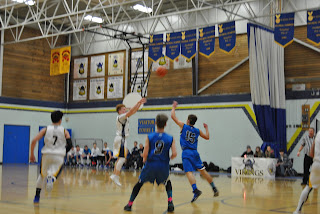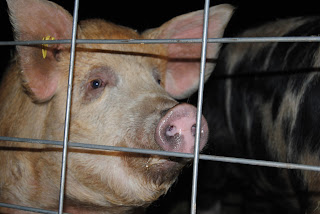Getting to Know Your Camera
a) What does the term
"The Rule of Thirds mean? (1)
The basic principle behind the rule of thirds is to
imagine breaking an image down into thirds (both horizontally and vertically)
so that you have 9 parts.
b) What happens when you have a long shutter speed, and what types of pictures would you use a long shutter speed for? (2)
b) What happens when you have a long shutter speed, and what types of pictures would you use a long shutter speed for? (2)
Long shutter speed will
result in an increase of light into the camera. Long shutter speed would work
best in action shots such as a river or traffic to create a blurred photo.
c) What's another name for aperture, and what does an aperture control? (2)
c) What's another name for aperture, and what does an aperture control? (2)
An aperture is another name for a gap or opening. In
optics it is the gap that allows light to travel through.
d) What aperture setting would I need to take a portrait? (1)
d) What aperture setting would I need to take a portrait? (1)
F2.8 is great for portraits because it enables high
shutter speeds, therefore, more is in focus.
e) What is depth of field? (1)
e) What is depth of field? (1)
Depth of field is when there is more than one thing
in the photo but one in particular is in more focus than the other.
f) What does the term ISO refer to? (1)
f) What does the term ISO refer to? (1)
ISO measures the sensitivity of the image sensor.
g) What are the advantages of having your camera on Manual Mode? (1)
g) What are the advantages of having your camera on Manual Mode? (1)
Manual mode is when all the settings are set to a
certain manual setting and you know all the settings won’t be funky and photos
will be taken properly unless you adjust some other setting to enhance your
photography.
h) Give me three
terms that relate to exposure. (3)
1. Exposure compensation
1. Exposure compensation
2. Shutter speed
3. Light, brightness
I) What is a lens and
what are the three different types of lenses? (4)
A lens is a transmissive
optical device that affects the focus of a light beam through refraction. Three
types are biconvex, plano- convex, and meniscus- convex.
j) What does it mean to focus your camera? (1)
j) What does it mean to focus your camera? (1)
When focusing your camera,
you’re moving the lens closer or farther away from the film surface. As you are
moving the lens you’re trying to focus the real image of an object so it falls
directly on the film surface.
k) What does "shooting speed mode" determine? (1)
k) What does "shooting speed mode" determine? (1)
How fast you’re taking the picture.
l) How is the "Raw" file different than the "JPEG" file? (1)
Raw files are huge and converting them to JPEG
makes them smaller and easier to work l) How is the "Raw" file different than the "JPEG" file? (1)



Comments
Post a Comment